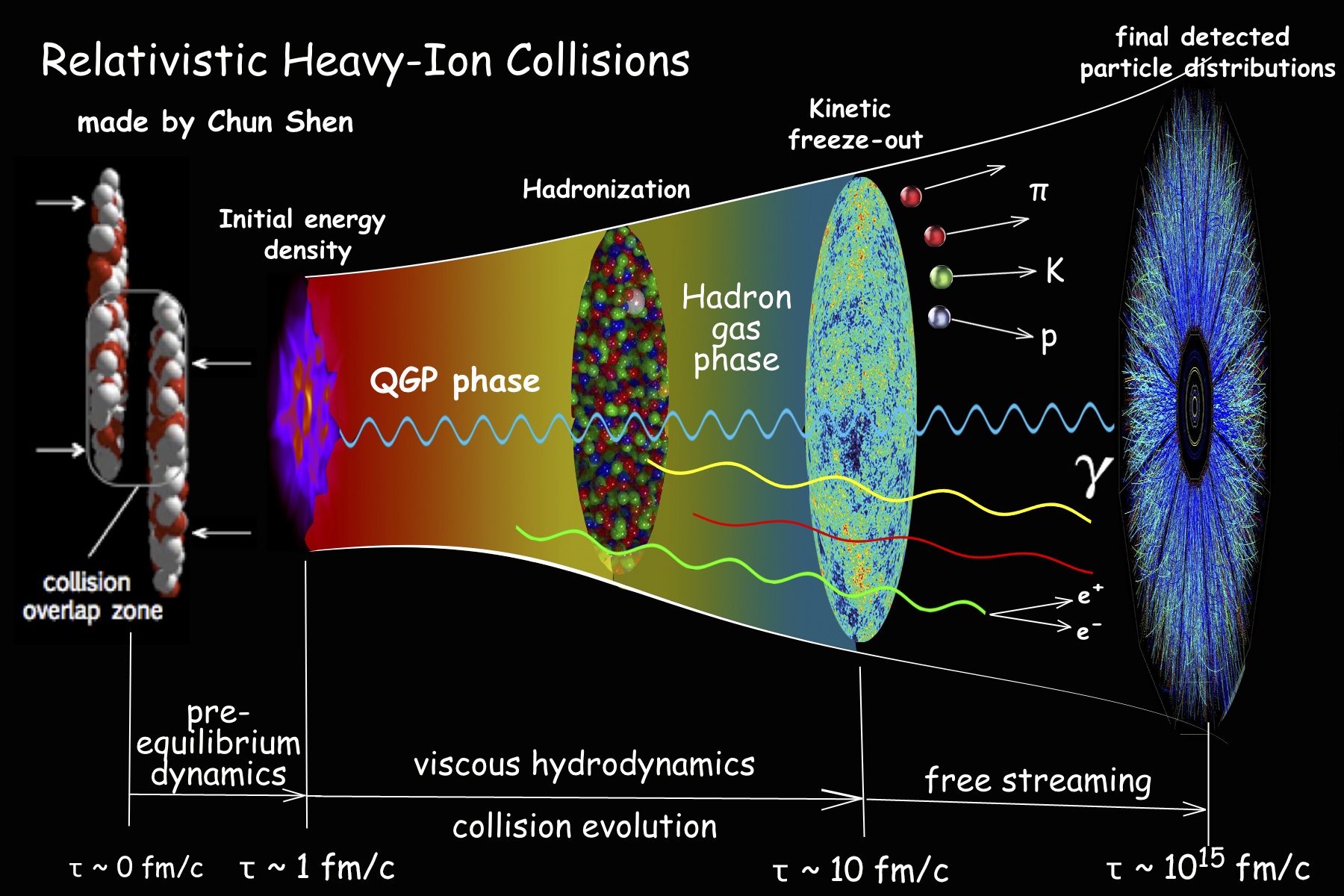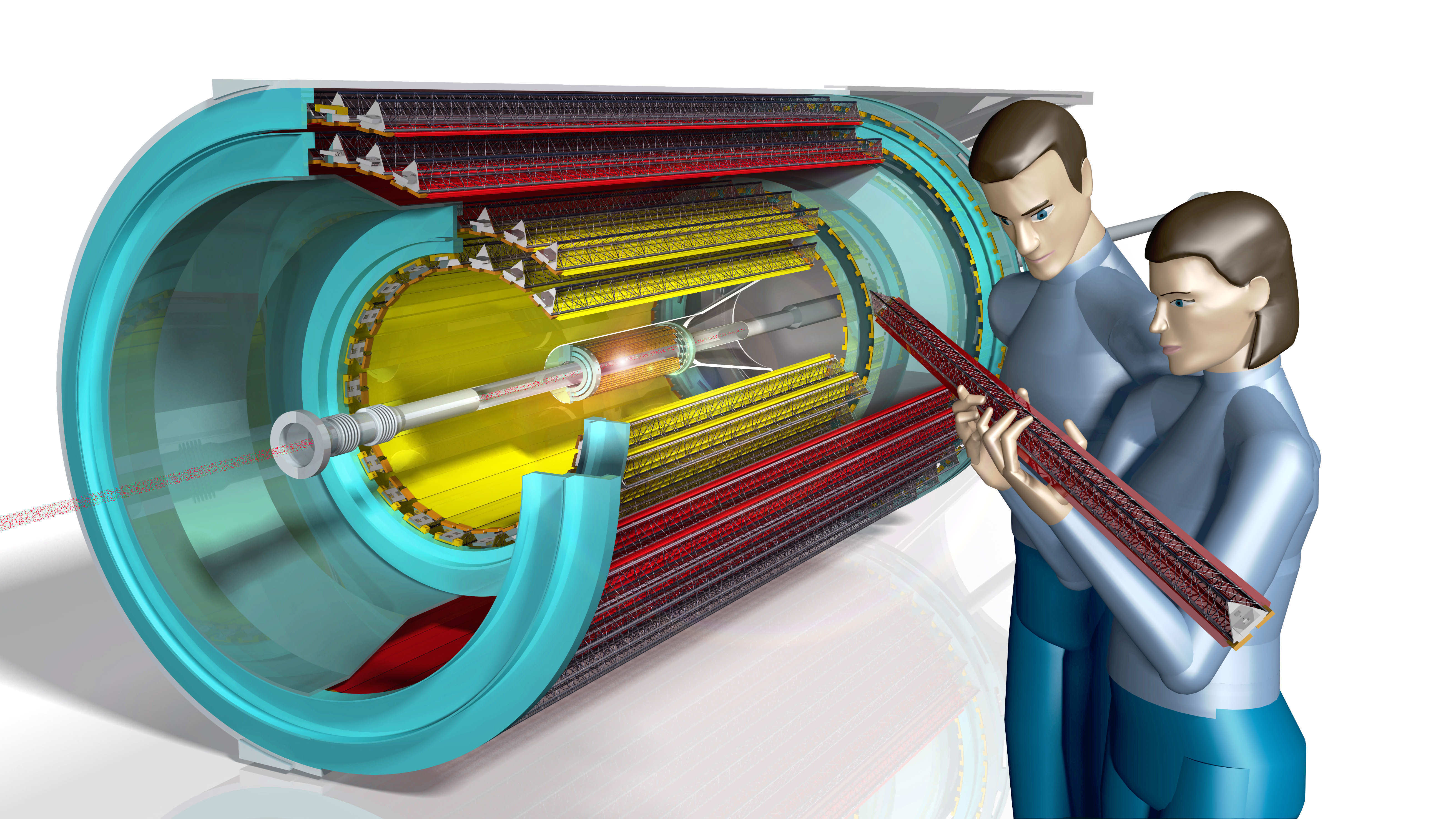
Ultra-Relativistic Heavy-Ion Collisions
I try to understand how matter behaves at extreme densities and temperatures as may have prevailed in the first microseconds after the Big Bang and might still prevail in the core of dense neutron stars. Matter at these temperatures and densities is predicted to be in a new state were quark and gluon degrees of freedom can propagate over large distances. This new deconfined state of matter is called a quark gluon plasma (QGP). We try to create such a state of matter in the laboratory by colliding heavy nuclei at relativistic energies.
Collective Flow
As in the early universe, the hot and dense system created in a heavy-ion collision will expand and cool down. This collective expansion is called flow. Flow is an observable that provides experimental information on the equation of state and the transport properties of the created QGP. The azimuthal anisotropy in particle production is the clearest experimental signature of flow in heavy-ion collisions. This azimuthal anisotropy can be observed by measuring the azimuthal correlation between the produced particles and is the main area on which we focus.
Jet Quenching and Heavy Quarks
In addition to the bulk properties, azimuthal correlations between particles and the reaction plane are also an ideal probe of jet quenching. Jet quenching, is expected to depend strongly on the color charge density and on the traversed path length of the propagating parton. Due to the initial almond shape of the interaction region the path length depends on the azimuthal angle. Thus by measuring the azimuthal correlations between jets versus the reaction plane angle, information about the color charge density can be obtained. Heavy quarks are of special interest to us because they are formed at the early stage of the collision when there is enough energy available to create a pair of heavy quarks. Therefore they probe the QGP during almost its entire lifetime and due to their heavy mass are very sensitive probes of the level of thermalization of the medium.
The ALICE Detector
To perform these and other studies the ALICE collaboration has designed a detector optimized for the measurement of heavy-ion collisions at the LHC. We at the Utrecht University and at Nikhef have made major contributions to the inner silicon detector.
